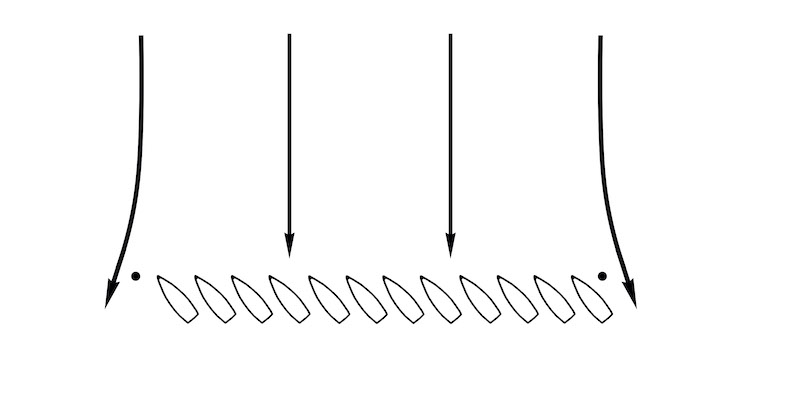
Max Ebb — It Starts Here
“Three … two … one …,” Lee counted down to the start signal. “Bang!” But her “bang!” was followed by an awkward second of silence before the horn sounded from the RC boat.
“Amateur RC,” Lee sighed. “But like, it’s just a beer can race; you can’t expect pro-quality timing.”
The important thing was that I had nailed a boat-end start, at the right end of the line. Our bow was just inches from the limit mark at the horn. Lee Helm would not normally hop onto my boat for a weeknight club race. But the wind was too light for her foiling windsurfer, and she arrived at the club guest dock a little too late for a ride on a faster boat.
“Like, don’t try that kind of start in a competitive fleet,” she advised me. “You had the boat end all to yourself.”
“Yes,” I said. “I like the starboard end of the line, even if the pin end is slightly favored. It’s just easier to time it right when you can see both starting marks on approach, and there’s also much less doubt about being over early at the gun. Give me another couple of clicks on the jib sheet, please.”
“Racing in a big one-design fleet will cure you of that,” Lee suggested as she cranked the winch handle half a turn.
As she did that my mainsail trimmer gave me a little more backstay and more sheet tension to flatten the main. We were pointing high, going fast, and the boats that followed us across the line were in very bad air.
“Even with a square line, exactly at right angles to the wind,” said the main trimmer. “I usually prefer the pin at the left end. It doesn’t show up in the pre-start wind checks, but when there’s a crowd of boats at the starting line, the wind tends to be blocked a little and flows around the fleet as if it were one solid obstruction. You get a starboard tack lift at the pin, and a header at the boat end. Not a big effect, but it’s there.”

I had seen that diagram drawn on several yacht club bar napkins. So had Lee, and not surprisingly, she had to point out why it was wrong.
